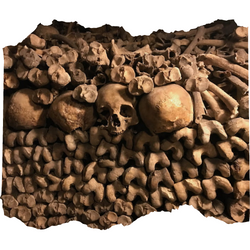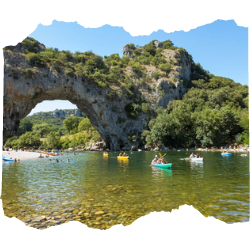Unsure about your French table manners? Click Here to download > > How to avoid these 10 food etiquette mistakes !
- Home ›
- Destinations ›
- Offbeat Destinations ›
- France Off The Beaten Path
France off the beaten path: 14 unexpected places you may not know
Updated 21 November 2023 by Leyla Alyanak — Parisian by birth, Lyonnaise by adoption, historian by passion
Much as I love our national attractions, I love the unexpected too – following a road to see where it leads, or visiting in a season no one else does so that I can have it all to myself. Sometimes I've ended up in deeper France, off the beaten path.
In the year 2000, France underwent a major petroleum strike (this happens every few years). Oil refineries shut their gates as protestors blocked access.
Across France, people, myself included, were stranded, unable to fill up their cars.
I was one of the fortunate ones. I was in the Camargue (#3 below) and was stuck – on the beach.
For a week, my car stayed parked, and I walked or cycled everywhere, enjoying clean air and a sense of calm I haven't felt again since.
I carried those memories with me until I returned recently and yes, it was every bit as peaceful a I remembered. It was also mid-winter, a season I'm growing to love in France.
Few tourists, French or foreign, jostled for space. Restaurants were blissfully empty, and the roads all mine.
Below is an eclectic list of places I consider off the beaten path, like the Camargue, places I've ended up unexpectedly, along with a couple of places I haven't visited yet but plan to.
My goal here is to help you discover at least one place you don't know or have never heard of − and make you want to go. Let's see if I've succeeded...
NOTE: Pages on this site may contain affiliate links, which support this site. See full Privacy Policy here.
When you visit France for the first or second time, certain sights are must-sees:
- Paris and its attractions of course (the Eiffel Tower, the Louvre and so on)
- Provence and its sunshine and lavender and hilltop villages
- Loire Valley chateaux
- and perhaps a quick trip to taste some wine in Burgundy or Champagne in Reims.
If you've seen all these and yearn for something new, here are some non-touristy things to do in France.
Well, less touristy, in any event!
1. The Beaujolais region - it's not just wine!
Most of you are no strangers to Beaujolais – but you may know the wine, not the region. Yet Le Beaujolais is delightful and so close to Lyon it would be a shame to miss it.
Of course if you're an oenophile, you'll be doing what you can to sample its 10 vintages, like Brouilly or Chénas or Saint-Amour.
But beyond the wine culture, I like the arrière-pays, the backcountry, particularly the corner called Les Pierres Dorées and its villages of ochre-coloured stone and narrow streets.
I have a particular fondness for the quaint village of Oingt (just pronounced like the WA in wagon, believe it or not), which also happens to be on the list of the most beautiful villages of France.
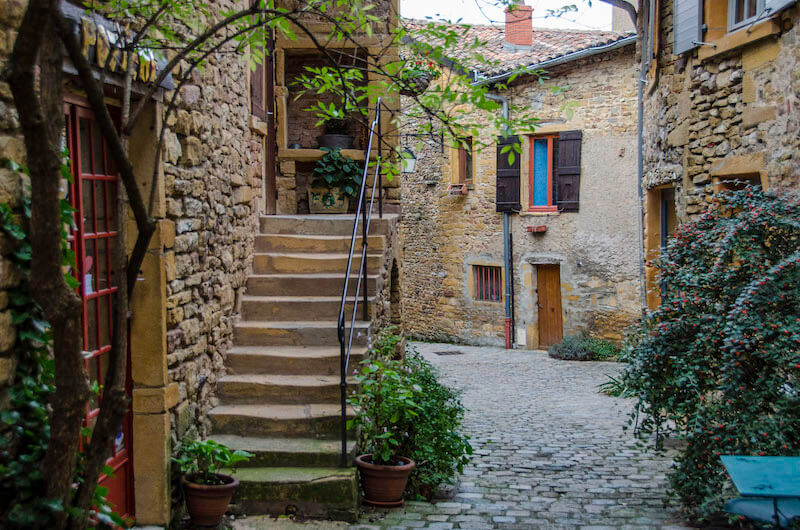 The beautiful village of Oingt, one of my favourites
The beautiful village of Oingt, one of my favouritesThe end of the year is the right time to visit.
- For something utterly unique, come in September for the international barrel organ festival (organ grinders, if you prefer).
- A little later, in November, it's time for the Beaujolais Nouveau (the rest of the year, plain Beaujolais will have to do).
- And if you're here in December, you'll witness something unexpected: an exhibition of nativity scenes in every window in the village.
You'll need a car to visit – it's a 40min drive. The nearest train station is in Villefranche-sur-Saône, with frequent trains from Lyon that take half an hour or so. But you'll have to take a taxi (to be reserved in advance) for the final leg to Oingt.
If you don't have a car, your best bet is to take a half-day wine-tasting tour from Lyon – Oingt is right in the middle.
Top things to do in the Beaujolais
- Drink all of the wine and visit the chateaux – my favourite is Montmelas and Delphine's guided tour
- Hike or bike (or Segway!) around the vineyards
- Have a Mâchon Beaujolais for breakfast (it involves cheese, charcuterie, and – wine!)
- Visit the Pierres Dorées, its villages, and the medieval Château de Jarnioux
- Savor a gourmet meal and enjoy the spa at the Château de Pizay
2. The ochre hills of Roussillon
If you like the idea of ochre in the Pierres Dorées, you'll love the Ochre Trail in the village of Roussillon, in the Lubéron region of Provence, not too far from Avignon.
The village has been home to a number of noted writers, which tells you something about its attraction, but lovely as it is, the village is not why we are here.
Near Roussillon are hills of the deepest ochre, an explosion of colour caused by iron oxide in the ground, which mixes with the local clay and sand. The area is sometimes known as the Colorado of Provence.
The ochre was mined commercially into the 20th century, with 20 plants in operation at its height. The trade died out with the advent of chemical dyes and today, a single plant produces ochre, mostly for use in fine arts. The scarring on the earth remains, however.
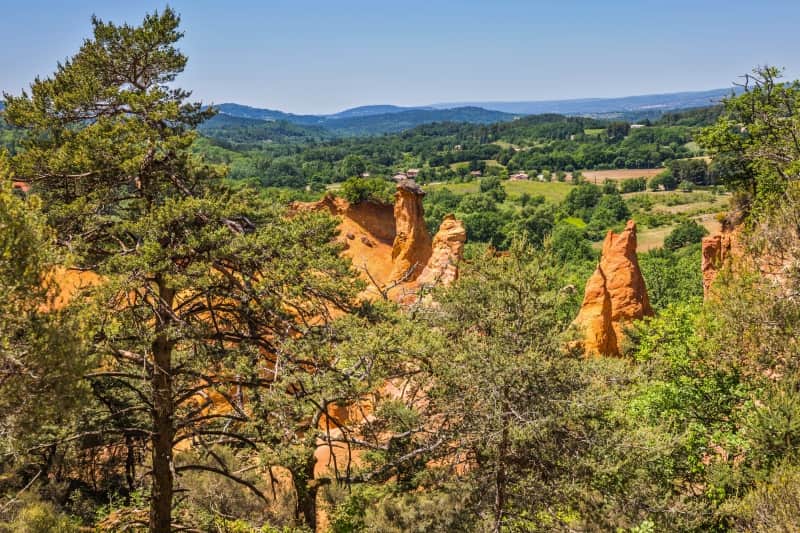 You'd think you were in another part of the world rather than in Provence, wouldn't you?
You'd think you were in another part of the world rather than in Provence, wouldn't you?The ochre's when and why remain a bit mysterious, although there are, of course, some legends that surround it (as is the case in much of the Luberon). Here are two of the most common.
Way back when the gods ruled the earth, Titans tried to conquer Provence but were kept away by local populations. In retaliation, the Titans built a giant fire rocket in a cave. It spewed its fire upon Roussillon, leaving the ground a deep ochre. (You'll see the color reflected on the walls of Roussillon as well.)
The other is a medieval legend that involves the Lady Sermonde, whose husband discovered she had a lover. He killed the lover, dismembered him, and cooked him up in a stew he served up to his wife. When she learned the truth, she threw herself from the cliffs of Roussillon. Since then, her blood has stained the hills.
Walking around these hills, I'd rather opt for the first legend...
The Ochre Trail is an easy and enchanting walk that takes you from the village through a former quarry and woods. Beware, though, there are plenty of steps so you must be able to climb them.
Remember, this is ochre, so try not to wear white – and don't try to take any ochre home with you. The authorities are strict! To avoid the crowds, skip summer but if you cannot, at least aim for sunset, when it's cooler and many people are headed home.
To reach Roussillon, the nearest train stations are in Apt or Cavaillon, and if you'd like to get a sense of what Roussillon was like before it became popular, read Village in the Vaucluse.
Top things to do in Roussillon
- The Ochre Trail, of course, but also the Ochre Eco-Museum
- Lavender fields right at the foot of the village
- Drive to Gordes, one of the best-known hilltop villages, and visit the other spectacular villages of the Lubéron
- The Roman Pont Julien nearby
3. Medieval history in Cathar country
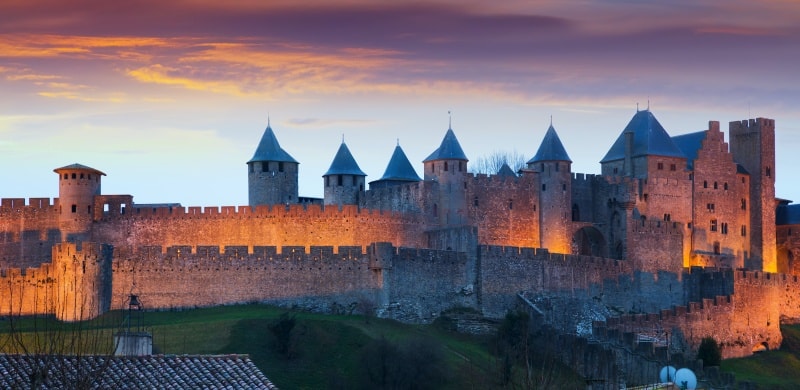 Cathar country: Carcassonne lit up at night
Cathar country: Carcassonne lit up at nightCathar Country is not quite undiscovered France, especially if you've read any Kate Mosse books, but let's be honest, the bulk of visitors to southern France head for Provence or the Riviera. Still, the many novels set here are now making the region much more popular, so best visit sooner rather than later to get to know one of the country's most historically fascinating regions.
The Cathars were a purist Christian group active in the region around Carcassonne between the 12th-14th centuries. They were considered heretics by the Catholic Church and persecuted to the death by the Albigensian Crusade and the Inquisition, their faithful often burned at the stake.
To defend themselves, they built a series of fortresses, the ruins of which pepper the green hilltops of Cathar country, with winding rivers and rural vistas as a backdrop. The most prominent ruins include such well-known remnants as Lastours and Peyrepertuse, but the city of Carcassonne is the best-known Cathar stronghold, and a good starting point for this trip.
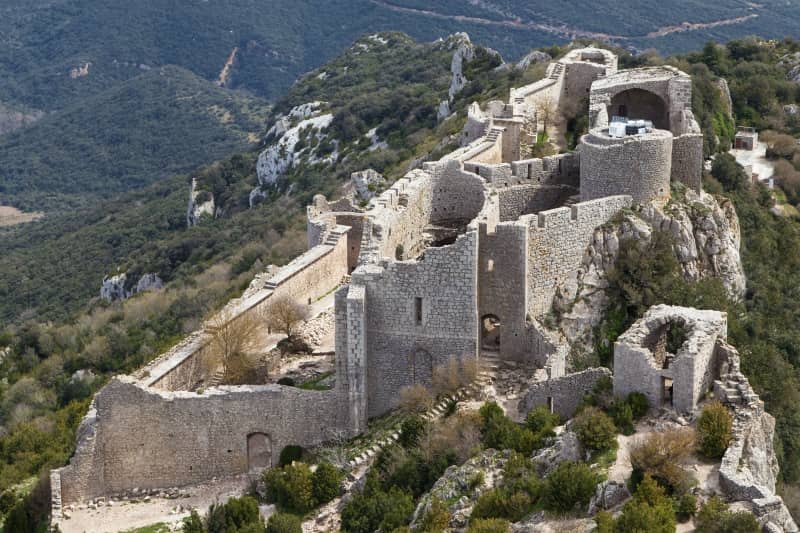 You can imagine what Peyrepertuse looked like in its heyday
You can imagine what Peyrepertuse looked like in its heydayThese are not easy visits, as the castle ruins are mostly high up and there is no transport. You'll need good legs and good walking shoes, not to mention a robust set of lungs to get to most of them.
And if you'd like to know more about the Cathars, here are some books, both historical and fiction. Or you can contact the local tourist office.
Top things to do in Cathar country
- Explore the fortress city of Carcassonne and all the Cathar ruins nearby
- Take a boat trip along the Canal du Midi
- Visit the Archbishops' Palace in Narbonne
- Stroll around the ancient and medieval village of Lagrasse
- In winter, try some rib-sticking cassoulet stew
4. The Camargue's pink flamingoes
Once you've seen the Camargue, you'll never forget it: it is a unique place of empty white sands, wildlife, the sound of flamenco guitars drifting through the gentle nights...
This area is much loved by the French but is one of those off the beaten track destinations often bypassed by foreign visitors.
The Camargue is a massive wetland in the southwestern corner of Provence, around the mouth of the mighty Rhône River, and is dotted with ponds and lagoons. Wild horses and bulls live in freedom among the many bird species and if you ride horses, this is a great place to let loose.
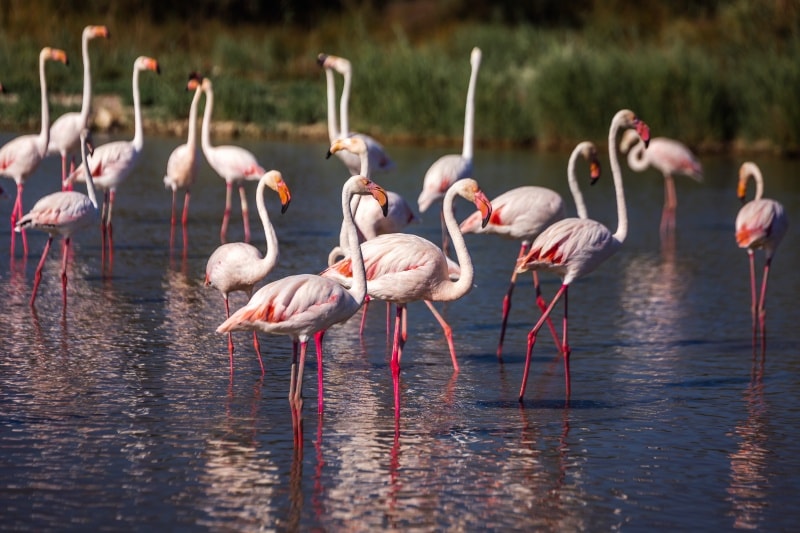 Wildlife spotting in the Camargue - pink flamingoes are only the beginning
Wildlife spotting in the Camargue - pink flamingoes are only the beginningThe highlight of wildlife spotting is without a doubt the overwintering pink flamingoes. Some of these flamingo "flamboyances" (yes, that's what you call a group of flamingoes) can number in the tens of thousands.
A wonderful place to spot wildlife is the Pont de Gau Ornithological Reserve, especially in the early evening, when the skies apparently burst into oranges and pinks. I say apparently because I visited during the day, when the skies were plain blue.
Or drive up and down the little roads of the Camargue around the town of Saintes-Maries-de-la-Mer. Each year, various groups of Roma converge here in May from all over Europe on a pilgrimage to venerate their Black Madonna, Sara.

The nearest city you can reach by train is Arles, from where you can catch a bus to Saintes-Maries or keep it simple by taking a small group tour. Or if you're driving, you can visit the Camargue as part of this 10-day south of France road trip.
Top things to do in the Camargue
- Gallop along the sand – you can rent horses from a 'manade', or local ranch
- Stay in a mas, a traditional farmhouse, and enjoy being serenaded by flamenco music in the evenings
- Take a day trip to the Roman ruins of Arles, a UNESCO World Heritage site
- In Arles, follow in the footsteps of van Gogh
- Go wildlife spotting
- See the Salin de Giraud salt flats
- Go to the beach (some are 10km long!)
- Explore the towns of Saintes-Maries-de-la-Mer, Aigues-Mortes, Arles
5. Les Gorges du Tarn, wild and wonderful
The Tarn is Europe's longest and deepest gorge, located somewhere between Toulouse and Lyon and to the north of the Millau and its giant viaduct.
You can choose between enjoying the natural aspect of the gorges – the hiking, the mountain climbing, the canoeing or kayaking – or the culture and traditions of medieval times, from the vineyards of Les Vignes to the charming village of Sainte-Enimie, listed as one of the most beautiful villages in France.
Wherever you turn in this stunning region, you'll be rewarded with spectacular panoramic views – and you'll be hard-pressed to run into a lot of other people. But this is hidden France, rural France at its best and you will need a car.
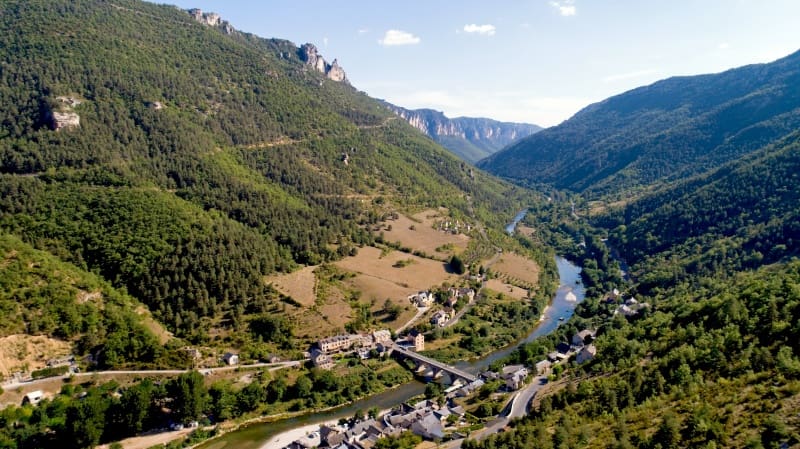
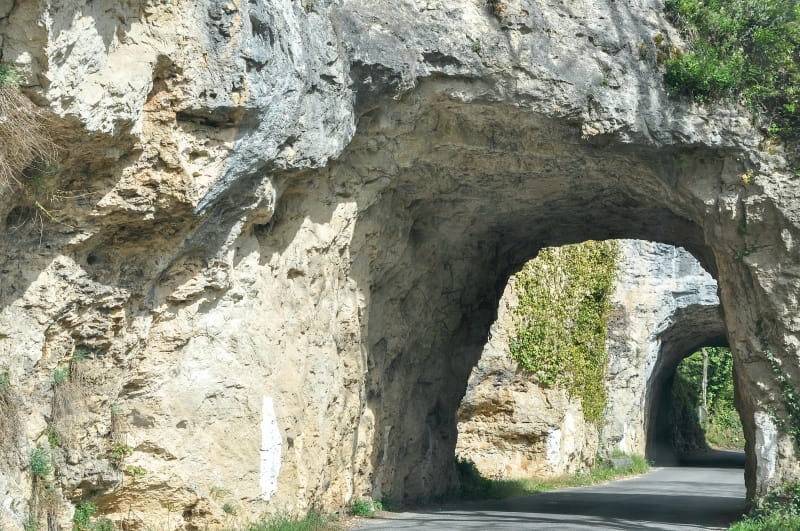 The wild beauty of the Gorges du Tarn
The wild beauty of the Gorges du TarnTop things to do in the Gorges du Tarn
- This is the place for outdoor activities: horseback riding, kayaking, hiking, mountain biking, canyoning, paragliding, climbing and the list goes on
- Drive along the spectacular Gorges du Tarn route
- Try some Roquefort in the town of the same name
- Have a look at the Millau Viaduct, the tallest bridge in the world
- Stop for lunch in Les Vignes or Ste Énimie
6. Le Pays Basque, oh so different
Here's to one of the more unusual destinations in France.
You've probably heard and maybe even visited "the other" Basque country over the Spanish border, but did you know that the entire Basque region has seven provinces, and that three of those are in France? I certainly didn't, not until I visited.
The region has two environments. The first is coastal, with long sandy beaches and wild surf, which starts near the city of Bayonne and stretches down to Biarritz, continuing all the way to the border with Spain.
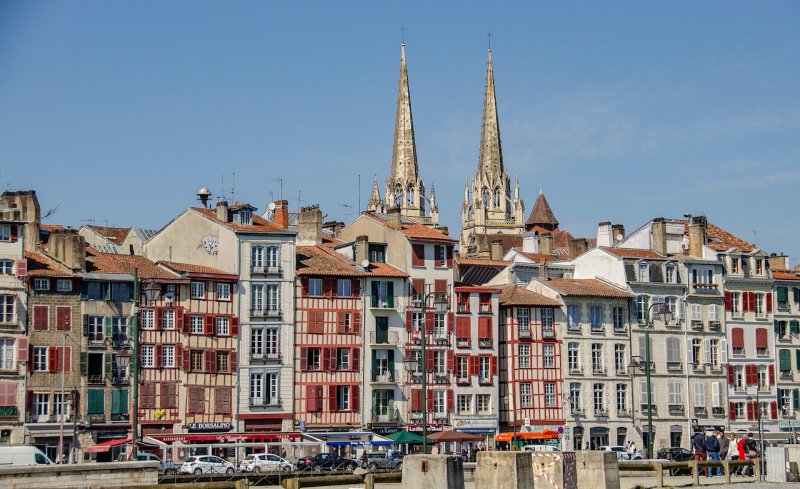 Beautiful old Basque houses of Bayonne
Beautiful old Basque houses of BayonneThis is an area of sophisticated resorts and adorable fishing villages, all close enough to one another to visit them all.
Saint-Jean-de-Luz is still an active fishing port but a historically important city − this is where Louis XIV married the Infanta Maria Teresa of Spain.
In the city of Biarritz, you'll run into wealthy dowagers sharing park benches with barefoot surfers waiting for the next wave. This is the city made famous by Empress Eugénie, the wife of Napoleon III, who in the 19th century built a summer house here, attracting a large slice of European royalty.
The interior of the Basque country is utterly different, with its rolling green hills and its timbered Basque houses and unique culture.
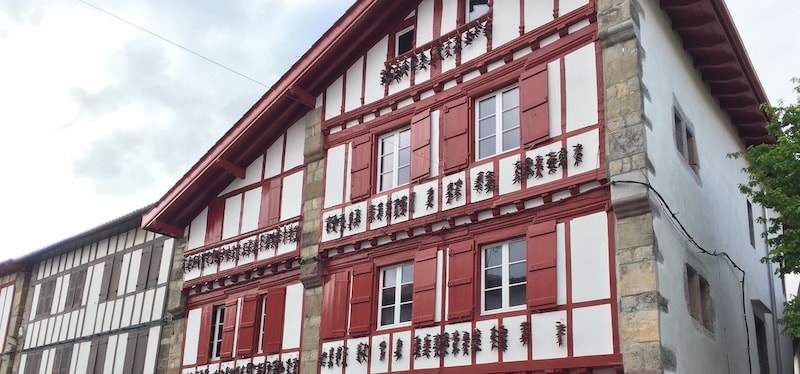 Typical Basque house in the village of Espelette, with Espelette chillies hanging out to dry on the façades
Typical Basque house in the village of Espelette, with Espelette chillies hanging out to dry on the façadesThis region's food is also special. You may have already run into Basque chefs in other parts of the world but they know their produce and their cooking. In a country known for its food, this region has some of the best.
This is also the home of the smoked Espelette chilli, named in part because of the nearby village of... Espelette. It's not particularly potent, but given the French lack of piquant cuisine, it does pack a bit of a punch for the average eater.
You may have heard of the jambon de Bayonne, or Bayonne ham, but you may not know Bayonne is also known for its chocolates...
I could go on about the food but I might just have to pull out some cooking utensils and get to work!
Top things to do in the Basque country
- Visit the villages of the interior (four of them carry the label of "most beautiful villages of France")
- Climb La Rhune mountain (and spot the wild pottok ponies), either on foot or by riding the little cog railway
- Explore the delightful coastal and mountain towns with this one-week itinerary
- Go surfing (some of the best surfing in Europe)
- Enjoy the region's wellness and spa facilities
- Buy local handmade goods
- Watch a game of pelote basque, Basque pelota, also known as jai alai
7. The Forez: art and history and mountains
The Forez (pronounced for-AY) definitely qualifies as one of the more hidden places in France: it isn't near any highly frequented tourist spot and it is discreet, surprising and full of tradition. I had vaguely heard of it and stumbled upon it while exploring the westernmost corners of my region, the Auvergne-Rhône-Alpes.
The Forez is punctuated by plains (the Plaine du Forez) that are bordered by mid-level mountains split wide open by deep gorges.
While nature here is striking, so is culture. The Forez is full of lovely medieval villages and unusual museums that reflect old traditions fighting to survive, from hat making to cart building.
One of my favorite places in all of France is located here: the Bâtie d'Urfé, a 16th-century chateau in Saint-Étienne-le-Molard, which has a unique Renaissance grotto depicting gods made of sand and sea shells (the chateau itself is also quite a gem).
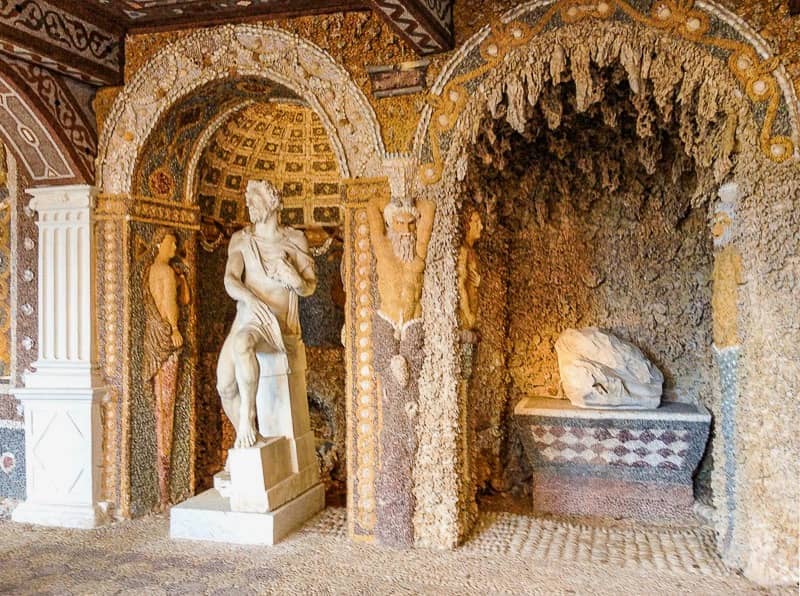 The unique Renaissance grotto of the Bâtie d'Urfé
The unique Renaissance grotto of the Bâtie d'UrféThe Forez is in the Loire département, but not the same Loire as the one with the chateaux − here, we are in the département number 42. (France can be confusing − I can think of a dozen places called Loire!)
A good base is Montbrison, a small but attractive town that holds what many consider to be France's prettiest market. To be honest, one of the reasons I based myself here was to "sample" chocolate... the city is home to not one but two Master Chocolatiers, Philippe Bel and François Pralus.
Top things to do in the Forez
- The market of the small town of Montbrison (and try the Fourme, its specialty blue cheese)
- Visit the Gorges of the Loire by boat
- The Bâtie d'Urfé, both the château and its grotto
- The two medieval fortresses of Saint-Just Saint-Rambert
- The Château de la Roche in Saint Priest la Roche
- Some very cool villages – Sainte Croix en Jarez, Ambierle, St Haon le Châtel, Charlieu
- Drink the naturally bubbly Badoit water in Saint Galmier (it flows from a fountain and you can fill a bottle a day)
8. Puy de Dôme: for volcano lovers
Do you like volcanoes?
If you do, the Puy de Dôme awaits. It's not very far from the Forez and it, too, is definitely France off the beaten track.
If you look across the natural rock formations, you'll see a perfectly aligned chain of dormant volcanoes that make up the Chaîne des Puys. You may even wonder if you're even in France – but then, diversity is the one constant in this country, isn't it?
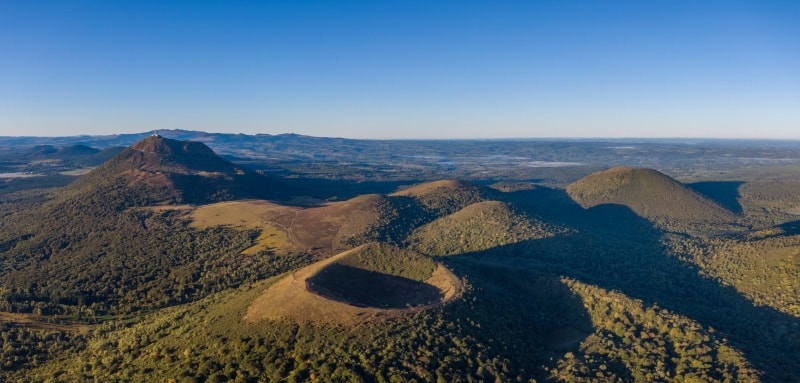 Near-lunar landscapes in the Puy de Dôme
Near-lunar landscapes in the Puy de DômeOnce at the top, you'll spot the Temple of Mercury, one of France's many Gallo-Roman ruins, which sits incongruously next to a modern microwave relay station. A highly criticized restoration project partially conceals the ruins behind a modern wall, adding to the science-fiction like aura of the site.
To fully satisfy your volcano fetish, drop by Vulcania, a theme park entirely dedicated to volcanoes. I haven't been, but it's on my list.
You can reach Clermont-Ferrand by train, and in summer there's a shuttle to the volcano, but again, you'll be better off with your own vehicle. For transportation options, get in touch the tourist office.
Top things to do in Puy de Dôme
- Hike up to the top
- Explore its extensive religious heritage – Notre-Dame-du-Port Basilica and Notre-Dame de l'Assomption in Clermont-Frerrand, the Basilica in Orcival, Saint-Austremoine Abbey in Issoire...
- Château de Tournoël in Volvic (home of the famous water)
- Saint-Nectaire (church and cheese!)
- Take the waters at Chatel-Guyon
9. The Jura mountains
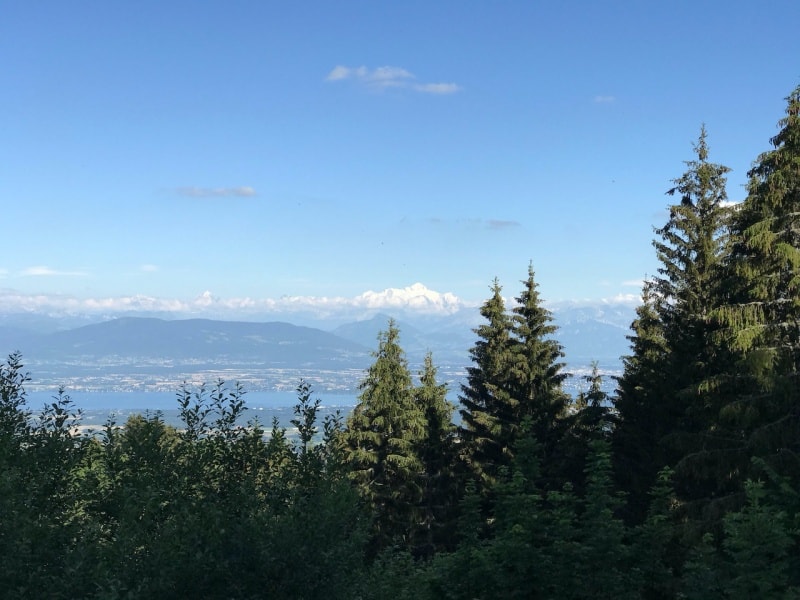 Looking outward from the Jura, we can see Lake Geneva below and the Mont Blanc in the distance
Looking outward from the Jura, we can see Lake Geneva below and the Mont Blanc in the distanceIf you're a downhill skier and visit France in winter, there's every chance you'll head straight for the Alps. But if you're a cross-country enthusiast, or a snowshoer, then the Jura Mountains are for you – lower, flatter, with wide open spaces and far fewer people.
The Jura goes well beyond skiing, with several beautiful villages, unusual museums (toys, eyeglasses, pipes and the Laughing Cow, to name just a few). The region is also home to wonderful cheeses, including my all-time favorite, Comté, quite mild when it's young but powerful when it's aged. It also produces the famous Vin Jaune, or yellow wine.
From early spring (sometimes later, depending on snow), this becomes a hikers' paradise.
The scenery is nordic, or Canadian, as you wish, as you make your way through the trees and along mountain lakes, the perfect outdoor experience in a beautiful, quiet setting. The easiest way to get here is through Switzerland, from Geneva. But... you'll need a car! (Which you can rent here...)
Top things to do in the Jura
- Cross-country skiing and snowshoeing in winter, hiking in summer
- Taste the cheese: Comté (my favorite) but also Morbier and Bleu de Gex
- Try the Vin d'Arbois (my friend Wink Lorch wrote this great book on Jura Wine)
- Relax and hike around some great waterfalls (Tufs, Hérisson), wonderful villages (Baume-les-Messieurs and Château-Chalon) and historical towns (Dôle, Orgelet)
10. Hidden France: beaches of the Cotentin
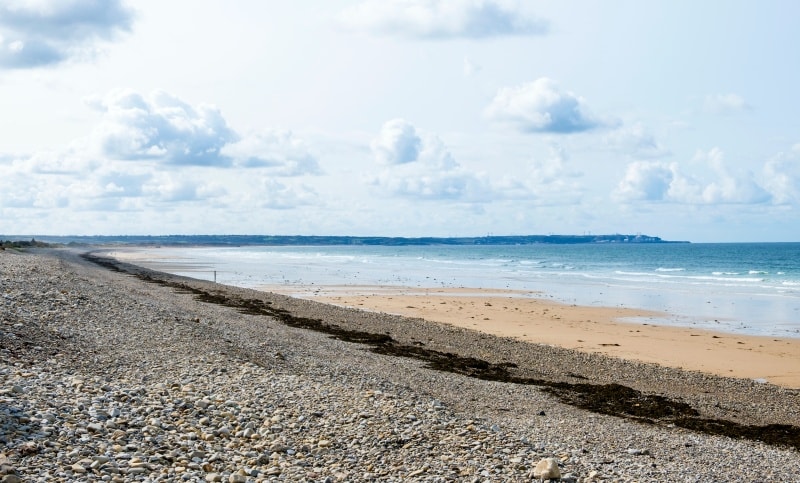 The beaches of the Cotentin are huge and often empty
The beaches of the Cotentin are huge and often emptyThis is one of the two places on this list which I have not personally visited, but I'm including it because several of my friends have recommended it highly.
I'm talking about the Cotentin peninsula in northern France, which apparently as some of the most most beautiful beaches in France. They are reputed to be far less crowded than most, with wide expanses of fine sand and striking natural scenery.
While everyone you know rushes south to the Riviera, you could laze around on stretches of near-empty sands...
These are highlighted as among the best Cotentin beaches:
- Biville, with its huge sand dunes
- Sciotot, an unending length of yellow sand
- Surtainville, even longer
- Portbail, one of the loveliest villages
- Jonville, the prettiest beach you'll find on the east coast (the ones above are all on the western side)
Of course this being Normandy, you can also look forward to wonderful dairy products, seafood and plenty of history.
The train will get you as far as Cherbourg but after that, you'll need a car.
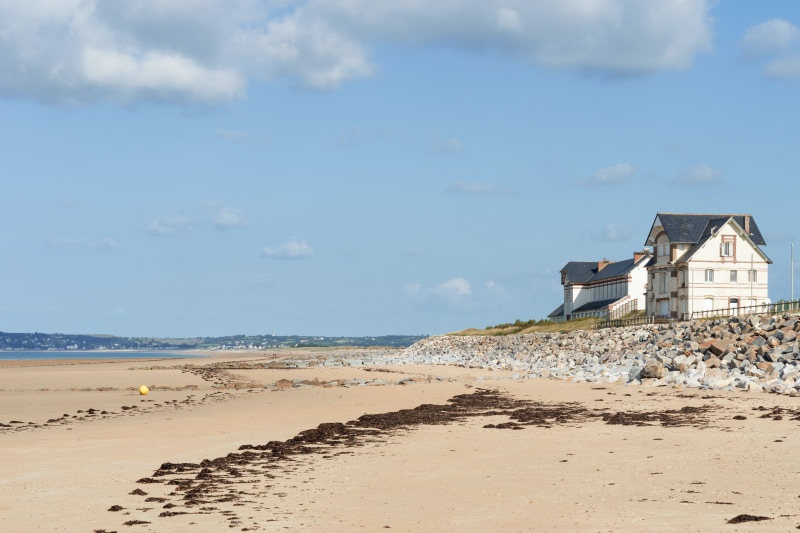 Portbail, in the Cotentin
Portbail, in the CotentinTop things to do in the Cotentin
- Go to the beach, of course!
- Visit Cherbourg and enjoy its maritime history
- Utah Beach and other D-Day landing areas (and military cemeteries)
- Eat plenty of seafood and dairy
- See Barfleur (some say it is France's prettiest small village)
- Take a day trip to the Channel Islands
11. Le Bassin d'Arcachon: sea and oysters
At the other tip of western France, the Atlantic beaches continue with the Bassin d'Arcachon. Parts of this region may not exactly qualify as 'off the beaten path', especially the Dune du Pilat, Europe's highest.
But you might not be familiar with the tiny villages that dot the edges of Arcachon Bay, some of them fishing in the same way they have for centuries and the best way to enjoy this area is to head there for a seafood lunch – a perfect place for oyster tasting.
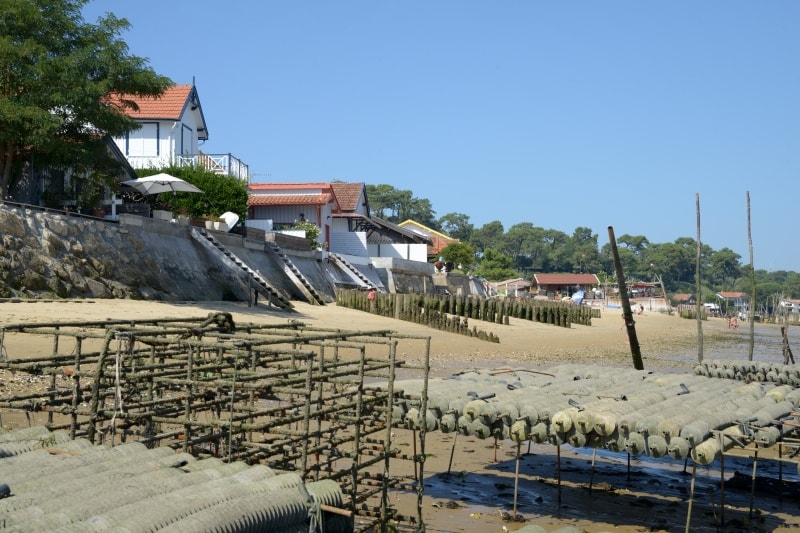
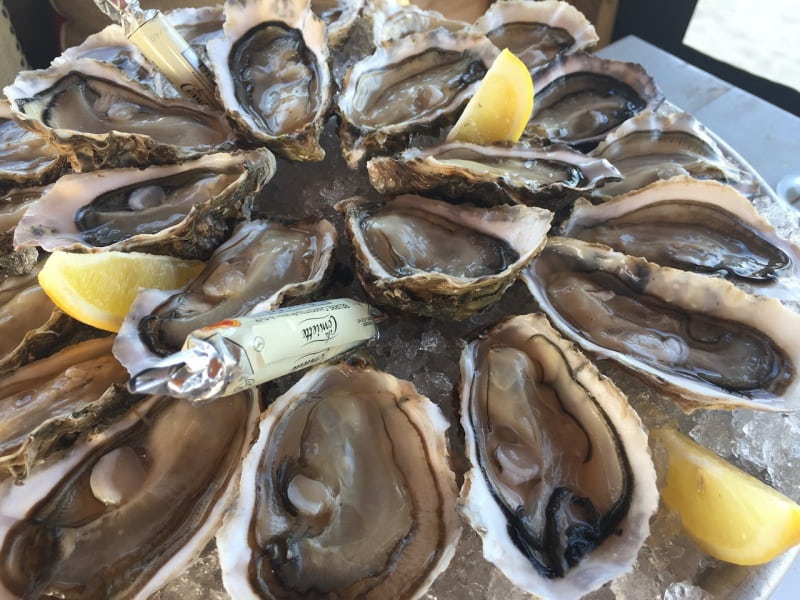 Oysters of the Bassin d'Arcachon, both in their crates, and on the platter!
Oysters of the Bassin d'Arcachon, both in their crates, and on the platter!You've got Cap Ferret, with its lighthouse (and breathtaking view if you can haul yourself the 258 steps to the top).
And I love l'Herbe, a picturesque village filled with oyster farmers – and plenty of opportunities to sample the local produce. Try La Baraque à Huitres, Émile et Une Huitres, or Ô Canelon.
While you're around Cap Ferret, you can take in an uncommon but delightful sight: the Algerian chapel, the last thing you'd expect to find here, which I only found accidentally. Read more about it on Instagram by clicking on the photo below.
The chapel may make you feel you've left the country, but the oysters will bring you right back.
You can get here by bus from Bordeaux but it takes forever – plus you'll need a car to get around from village to village, so, I'm sorry, but you'll need a car. A good time to visit is the fall, the beginning of oyster season! And fewer crowds... the place is hugely popular with the French, many of whom have secondary homes here, so expect crowds at vacation time.
Top things to do in the Bassin d'Arcachon
- Eat oysters
- Climb the Dune du Pilat (some people spell it Pyla – that is wrong; the dune happens to be in the town of Pyla sur Mer but does not take its spelling)
- Go to the beach
- Take a boat trip around the lake and see the famous houses on stilts, the maisons tchanquées
- Stroll around Cap Ferret, Canon and l'Herbe
- Eat more oysters
12. Corsica: one of the most offbeat places in France?
This is the only other destination on this list (the first is the Cotentin above) that I have not personally visited. No, despite its proximity to the mainland, I'm the only one of my friends to whom Corsica remains a mystery.
Yet trips to Corsica are hugely popular among the French, especially to visit the coastal capitals of Ajaccio and Bastia, the beaches, and the rugged mountains and perched villages of the interior, all French, with an Italianate twist that make this island unique.
This is a trip for road lovers, for whom twisty mountain driving is more pleasure than pain – it's really the only way to explore the island's interior.
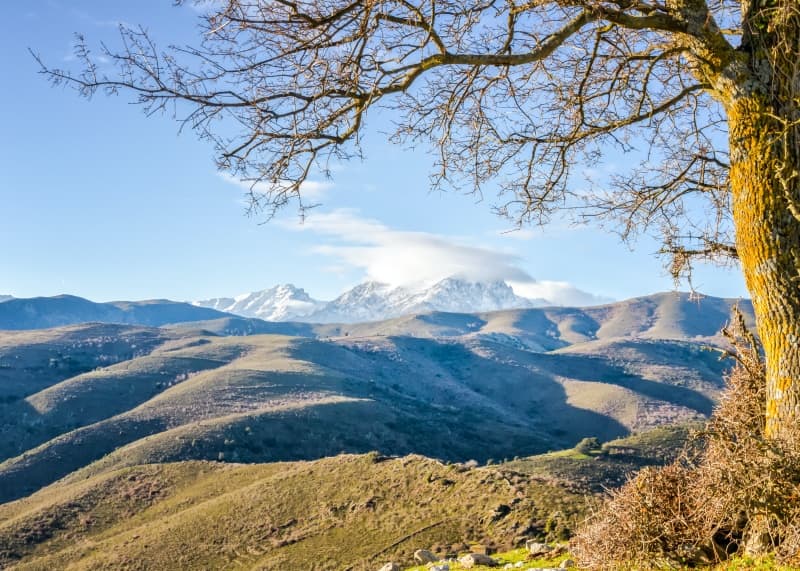 Monte Cinto in the distance
Monte Cinto in the distanceOnce here, you can climb Mount Cinto, the 'roof of Corsica', with its 12km trail and 2700m altitude, which will apparently take you two days there and back or, more accessibly, Lake Nino, one of Corsica's most beautiful (keep your eye out for some wild horses, I'm told).
The interior is home to lovely, traditional villages – Sartène, Moncale, Calacuccia, Corte... too many to list.
To me, though, the one big draw of Corsica, other than the food and the scenery, is the history. This is where Napoleon Bonaparte was born, his family home now a museum.
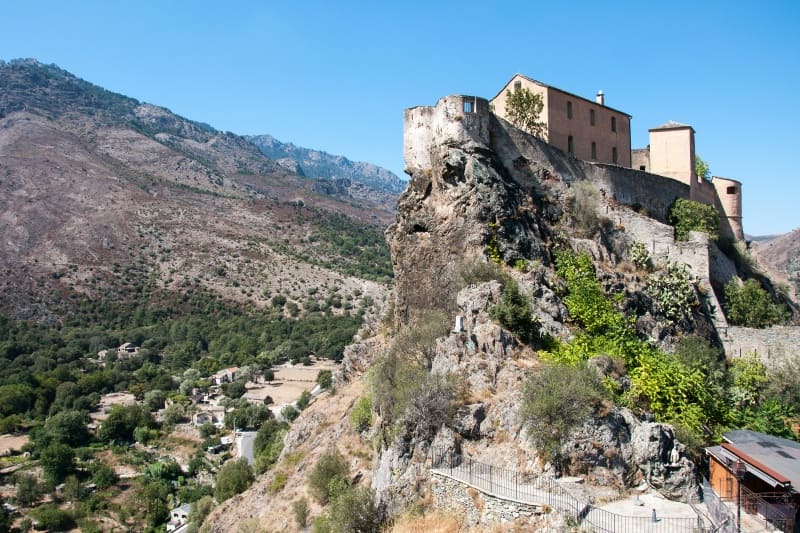 The perched village of Corte in Corsica
The perched village of Corte in CorsicaTop things to do in Corsica's interior
- Visit the Bonaparte Family Home
- Head for the mountains and their picturesque villages
- Admire the beauty of Scandola Nature Reserve
- Visit the prehistoric ruins of Filitosa
- Try some Corsican culinary specialties: brocciu cheese, prisuttu ham, anything with chestnuts, and Corsican wine
13. Cultural delights in the Haute-Marne
This may well be a region you've never heard of. I certainly hadn't until I actually visited.
It sits between Troyes, Nancy, and Dijon, a bit to the south of the region once known as Champagne (in fact, it has a few champagnes of its own).
Physically the Haute-Marne is a rural area, bucolic in places despite its industrial past, with farms and woodland and rolling hills dotted with lakes.
But what I find truly fascinating in this part of France is the history and culture hiding behind such a benign façade. Famous French ended up here, either by birth (Diderot) or by choice (Voltaire and De Gaulle).
I discovered plenty about France's history, culture and literature here: the region has France's smelliest cheese, its most complete town ramparts, France's oldest hotel, an industrial history involving everything from knife-making to Art Nouveau foundries, and a homage to some of the most erudite minds of the Enlightenment.
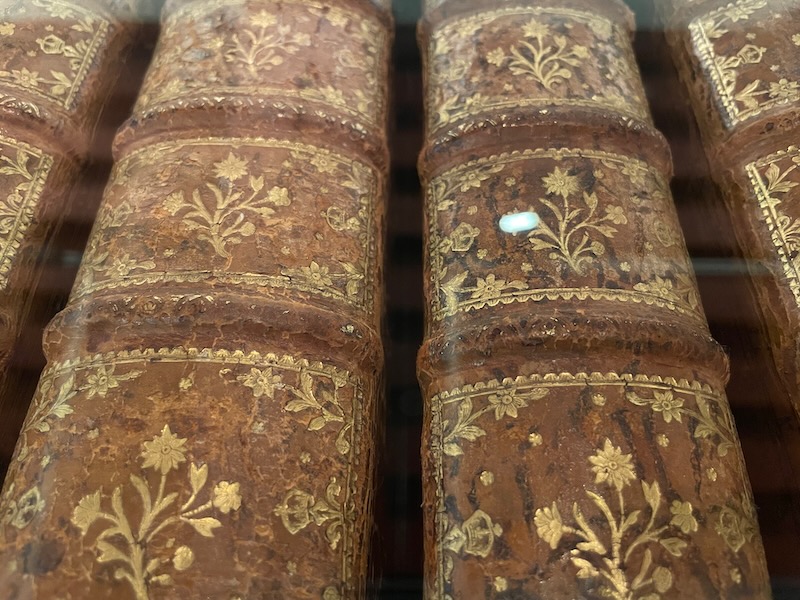 An original copy of Diderot's Encyclopedia, published in the 18th century, which contained most of the knowledge then available to humankind
An original copy of Diderot's Encyclopedia, published in the 18th century, which contained most of the knowledge then available to humankind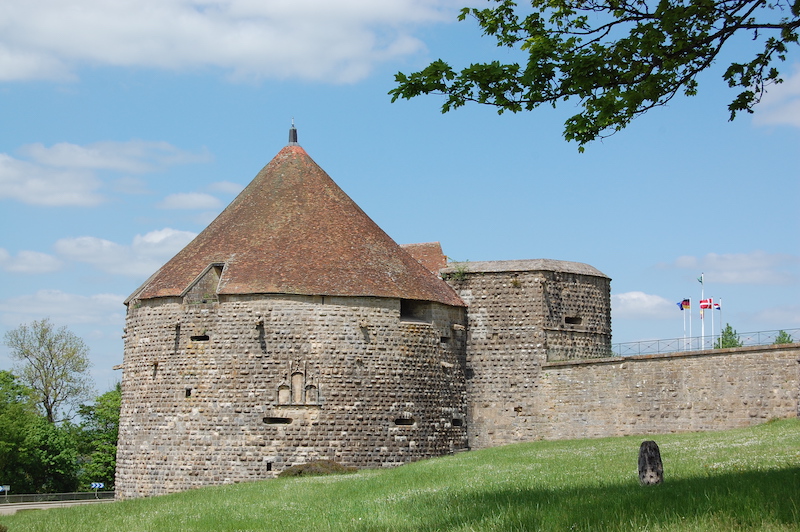 Tower and ramparts in the city of Langres, Haute-Marne
Tower and ramparts in the city of Langres, Haute-MarneTop things to do in the Haute-Marne
- Visit the former home of General Charles de Gaulle and the museum and memorial built in his honor.
- Explore the streets and ramparts of the medieval old town of Langres.
- Learn about Diderot and the Enlightenment at the Maison des Lumières.
- Understand local knife artistry at the Musée de la Coutellerie in Nogent.
- Roam through the Château de Cirey and discover Voltaire's 15-year love affair.
14. Nancy, for architecture and art lovers
It's so close to Paris, yet not that many international tourists visit.
If you love Art Nouveau and Art Deco (you'll find both here), then this is one of those "best hidden gems" that HAS to be on your next trip. It's an easy train ride from Paris, or if you're driving, you could combine it with a visit to the Haute-Marne above.
Nancy, home of the fabulous École de Nancy art movement, is one of the best places in France for architecture lovers: not only for its surviving early 20th-century work, but for its immense Place Stanislas, voted France's favorite square a few years ago and on UNESCO's World Heritage List.
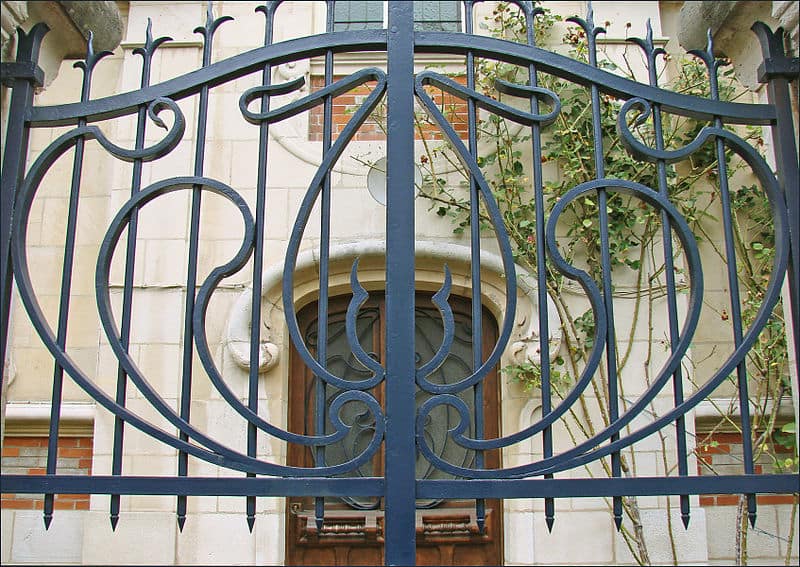 One of many signs of Art Nouveau across Nancy
One of many signs of Art Nouveau across Nancy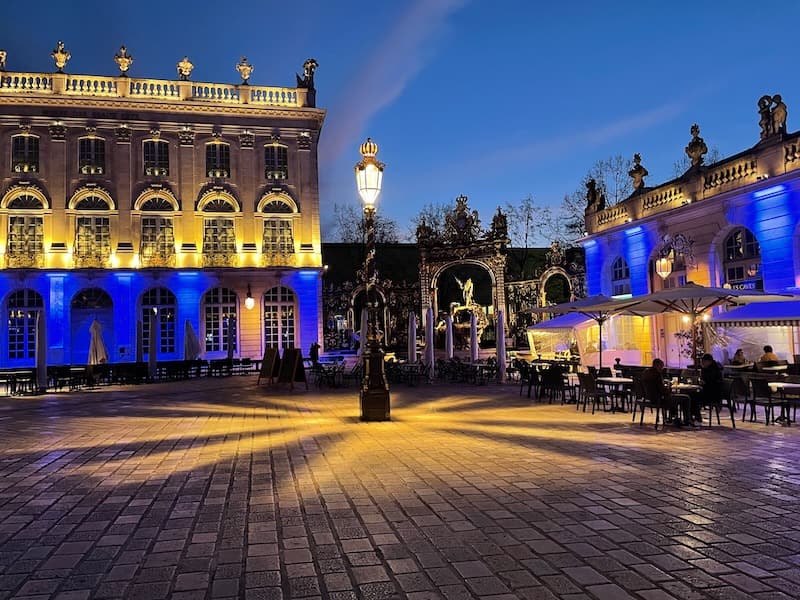 The stunning Place Stanislas at night
The stunning Place Stanislas at nightTop things to do in Nancy
- Visit the Villa Majorelle, filled with Art Nouveau treasures
- The Nancy School Museum is another perfect Art Nouveau treasure trove
- The Daum Collection at the Museum of Fine Arts is a collection of priceless crystals that trace the evolution of glassware
- Explore the architectural wonders of the streets of Saurupt neighborhood
- Have a meal at the Excelsior Brasserie across from the train station and look around at all the Art Nouveau symbols and decor
- Sip a coffee on the enormous Place Stanislas
WANT TO SEE MORE OF FRANCE BUT DON'T HAVE MUCH TIME?
Try one of these 22 Fabulous Day Trips from Paris by Train
Practical information
- Some of these areas can be reached by train or bus, which you can reserve here.
- Most areas are rural, however, so you may need to rent a car. Click here to compare car rental prices.
- You can compare prices and availability of hotels in all these regions through booking. com
Did you enjoy this article? I'd love if you shared it!



